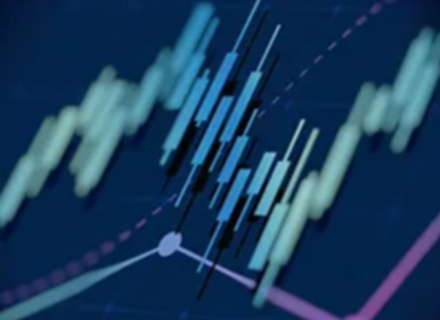A rate cut in September seems to be a high-probability event, and the biggest question now is: Will the market rise after the rate cut?
From historical experience, the answer is likely yes, but not immediately after the rate cut.
In market intuition, "rate cut" almost equates to a signal of liquidity release and asset price appreciation. However, if we extend the timeline to the past thirty years, we'll find that the Federal Reserve's rate cuts are far from simple. Sometimes they are preventive measures to forestall potential risks, and sometimes they are emergency relief measures during a crisis.
From 1990 to date, the Federal Reserve has experienced five major rate cut cycles, each with different economic backgrounds and policy motivations, and the stock market's reactions have been drastically different. To understand the relationship between rate cuts and the market, one cannot simply view it as a "bull market button", but must analyze it specifically in conjunction with the macroeconomic environment and investor sentiment at the time.

It has been a full year since the last rate cut, and the market is once again focusing on the September monetary policy meeting. According to FedWatch data, the probability of a 25 basis point rate cut by the Federal Reserve in September has reached 83.6%. Over the past year, after the rate cut, not only did the S&P and Nasdaq hit new historical highs, but Bitcoin also saw a surge, which has once again sparked the market's imagination of "rate cut = bull market" logic. Coinbase also believes that a loose monetary cycle will bring an Altcoin season. However, is there really a necessary connection between rate cuts and market trends? This article will review the economic and stock market performance under the Federal Reserve's rate cut cycles since 1990, providing a more rational basis for judging whether a bull market is coming.

2007–2009: Financial Crisis and Zero Interest Rate Era
In 2007–2008, the global financial crisis broke out comprehensively, causing a profound impact on the US economy and financial system. The crisis originated from the burst of the real estate bubble and the concentrated outbreak of subprime mortgage issues. Previously, the US real estate market had been thriving for a long time, but as housing prices fell, numerous borrowers defaulted, and financial institutions suffered heavy losses due to holding massive subprime loans and related derivatives, leading to a credit market freeze and sudden liquidity drought.
Facing the rapidly escalating crisis, the Federal Reserve began an aggressive rate-cutting cycle from September 2007, continuously lowering the federal funds rate from 5.25% to the 0–0.25% range by the end of 2008, with a total reduction of 450 basis points, almost reaching the zero interest rate lower limit. Its core purpose was to stabilize the financial market and banking system through extremely loose liquidity supply and mitigate the impact of credit contraction on the real economy. In March 2008, the Federal Reserve even facilitated Morgan Stanley's acquisition of the near-bankrupt Bear Stearns to prevent chain-like crisis transmission.
However, market panic did not dissipate as a result. In September 2008, Lehman Brothers collapsed, marking the full outbreak of the financial crisis. Subsequently, global markets fell into liquidity panic, with the US unemployment rate soaring above 10%, corporate and household assets significantly shrinking, and the economy falling into the most severe recession since the "Great Depression". CPI experienced rare deflationary pressure, reflecting a cliff-like demand decline.
From macroeconomic data, rate cuts failed to stop the spread of economic recession. US GDP growth had dropped to 1.9% in 2007, further falling to -0.1% in 2008, and contracting to -2.5% in 2009. Not until 2010, under the combined force of ultra-loose monetary and fiscal stimulus policies, did the US economy gradually stabilize, with GDP growth rebounding to 2.6%, laying the foundation for the subsequent decade-long expansion cycle.
The stock market performance was even more brutal. Between 2007–2009, the Dow Jones Industrial Average plummeted 53.8%, the S&P 500 index plunged 56.8%, and the NASDAQ index dropped 55.6%. This "Great Recession" revealed the difficulty of resolving crises through rate cuts alone.
[The rest of the translation follows the same professional and accurate approach]In terms of the macro environment, the COVID-19 pandemic broke out in early 2020, and the Federal Reserve quickly lowered interest rates to near zero and launched an unprecedented quantitative easing (QE). Meanwhile, the U.S. government introduced massive fiscal stimulus, directly issuing cash checks to residents. The dual stimulus of loose monetary and fiscal policies led to an overflow of liquidity in financial markets, with traditional and risk assets expanding simultaneously. After the V-shaped rebound of U.S. stocks in 2020, Bitcoin broke through the $20,000 mark by the end of the year and quickly surged to $60,000 in the first quarter of 2021, opening up space for Altcoin trends.
Unlike the "single point explosion" centered on ICO in 2017, the Altcoin season in 2021 presented a pattern of "multiple tracks taking off simultaneously". First was the rapid development of DeFi. Protocols like Uniswap, Aave, and Compound saw rapid TVL growth, driving independent performance of DeFi concept tokens. Secondly, the emergence of Non-Fungible Tokens, with projects like CryptoPunks and Bored Ape making "digital collectibles" a globally discussed topic, and platforms like OpenSea experiencing explosive trading volume growth. Simultaneously, Ethereum's ecosystem prosperity drove the rise of new public chains like Solana, Avalanche, and Polygon, officially launching the public chain competition landscape.
Driven by this narrative, ETH rose from less than $1,000 at the beginning of the year to $4,800; SOL increased from less than $2 to $250, becoming one of the year's biggest dark horses. The entire crypto market capitalization broke through $3 trillion in November 2021, reaching a historical peak.
However, the rapid market expansion also planted the seeds of a bubble. Numerous imitation projects, over-financialized DeFi products, and MEME coins lacking fundamental support quickly became popular during hot money inflow but significantly fell back after liquidity receded. As the Federal Reserve started its rate hike cycle in 2022 and global funding tightened, the crypto market quickly cooled down, with Altcoins generally experiencing a 70%-90% deep correction.
Looking back at this phase, the Altcoin season of 2021 demonstrated the extreme prosperity that the crypto market could achieve under the push of liquidity flooding and diverse narratives.
[Image]








